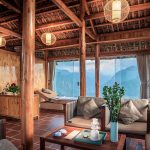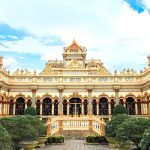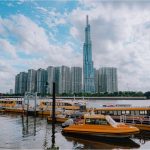Hanoi, the capital of Vietnam has a thousand-year history. A melting pot of South East Asian, Chinese and French cultures. Steeped in legends, an ancient history and traditions intertwined with the modern era. For first time visitors,Hanoi is an experience that hits all the senses.
Ancient city streets
The old quarter, dates back to 13th century, is best explored on foot. See the unique long narrow tube houses with shop fronts frantically doing trade.Follow the labyrinth of the ancient “36 streets”, each named after its original trade which served the royal citadel. Street names such as silver, sails, cotton, copper, onion, oil, barrels and bamboo- to name but a few. Hidden away and rubbing shoulders with modern times are many places of worship such as Bạch Mã temple, Hòe Nhai Pagoda, Co Vu communal house.
Central heart
South of this pulsating maze, is Hanoi’s heart. Evocative Hoàn Kiếm Lake or Lake of the Restored named after the legend of a magical sword being returned to the Turtle God. Serene and quiet, surrounded by trees and winding paths, it’s a great place to watch the locals doing their early morning exercise or happy couples posing for wedding photos. At the north end, Ngọc Sơn temple dedicated to General Trần Hưng Đạo perches on Jade Island, linked by its bright red bridge lit up night.

Water Puppets
A popular ancient Vietnamese form of entertainment dating back more than 1,000 years is water puppetry. This tradition is kept alive in theatres throughout Vietnam. Since 1969, leading Hanoi theatre the Thăng Long Water PuppetTheatre near NgọcSơnTemple performs around 500 shows annually. Daily rural life, folk stories and legends are relayed by lacquered wooden puppets in water manipulated by hidden puppeteers operating long rods and rotating plates.

French architectural grandeur
During the French colonial period (1873-1954) the face of Hanoi was transformed into a mini Paris with a grid of broad, straight, tree-lined boulevards; villas, European style cafes and institutions. Examples of differentcolonial architectural styles still remain today contributing to Hanoi’s unique and noble charm. South-South East of Hoan Kiem Lake is the French Quarterechoing the colonial French era. An imposing building in Tràng Tiền Street is the Hanoi Opera Housein beaux arts, neo-classical style with balconies, columns and shuttered windows. Opening in 1911 it was modelled on the opulent Paris L’Opera Garnier. Close behind and show casing Vietnamese history up to August 1945 is the National Museum of Vietnamese History. This is housed in a building redesigned by Ernest Hebrard in 1926-1932 in the unique Indochinese style.
Uncle Hồ
Turning Westwards is Ba Dinh district and Ba Dinh Square. This is the largest square in Vietnam and the site of many Government buildings including the Presidential Palace, National Assembly, Ministry of Foreign Affairs and Central Committee of the Vietnamese Communist Party. On the spot where President HồChíMinhproclaimed the Independence of the Democratic of Vietnam on 2 September 1945, is the deep-grey granite imposing Mausoleum. Here one can pay respect to his body which lies in state. Strict rules must be adhered to. Behind is the complex including the One Pillar Pagoda, HồChíMinh’s former house, carp ponds, extensive gardens and Museum.

Confucious and education
Not far from Ba Dinh Square is Văn Miếu nicknamed the Temple of Literature. It is a temple dedicated to Confuciusas well as outstanding scholars and great literary achievements. Confucianism is a philosophy based on correct behavior, loyalty and obedience which is deeply rooted in Vietnamese society and culture.Văn Miếu is considered Vietnam’s first university and dates back to1070. It remains a rare example of traditional Vietnamese architecture in Hanoi.

The founding of Hanoi
In October 2010 Hanoi celebrated its 1,000 years’ anniversary. In 1010 King Lý Thái Tổ built the Imperialcitadel which he called Thăng Long, meaning rising dragon after he claimed to have seen a dragon rising from the Red River. In 1831 the city was renamed Ha Noi meaning city in the bend of the river. Much of the citadel was pulled down during French urbanization; however,a lot of the central sector of the Thăng Long Imperial Citadel has been preserved. Declared a UNESCO World Heritage site in 2010, one can visit the gardens, bonsai trees, many historic artifacts dating back over the centuries, the underground bunkers from the American War and an exhibition of numerous artifacts found at the next door archaeological site.
In Hanoi there is definitely something for everyone.
Source: ehgnews.com






